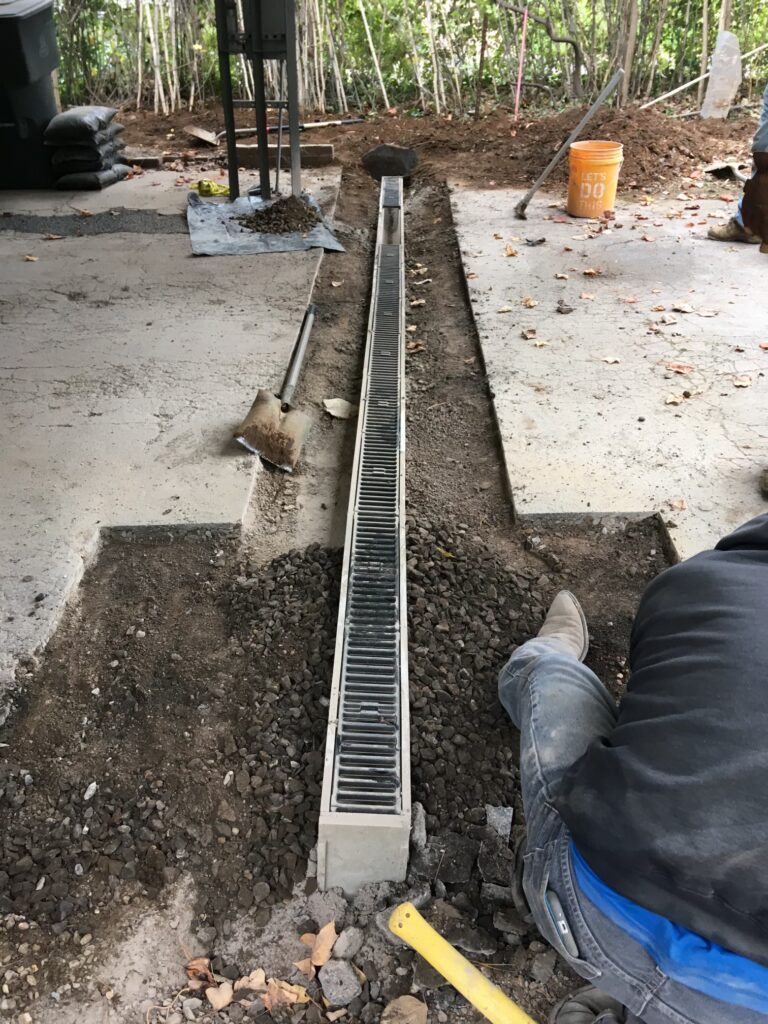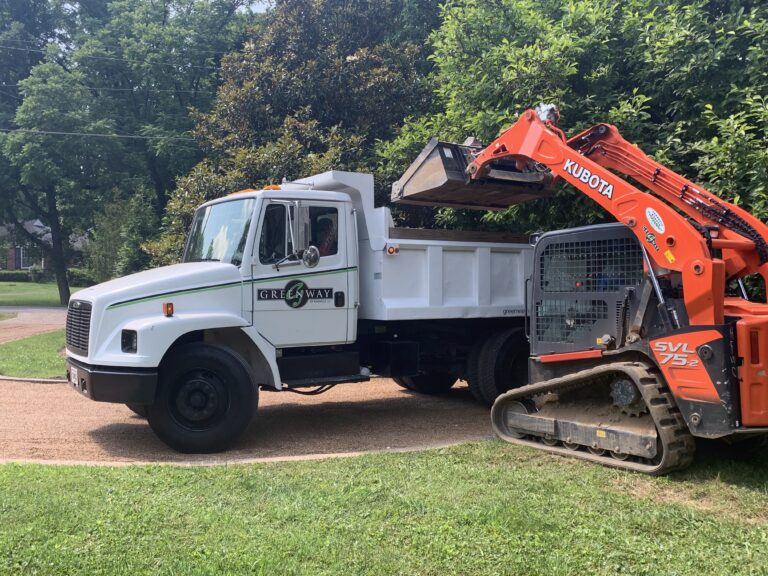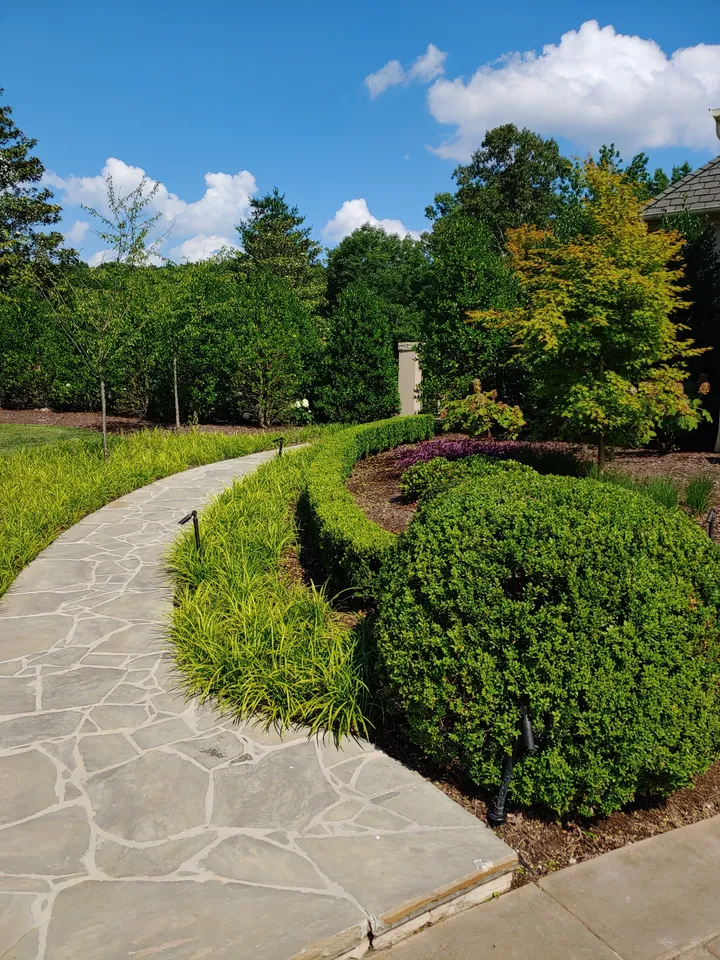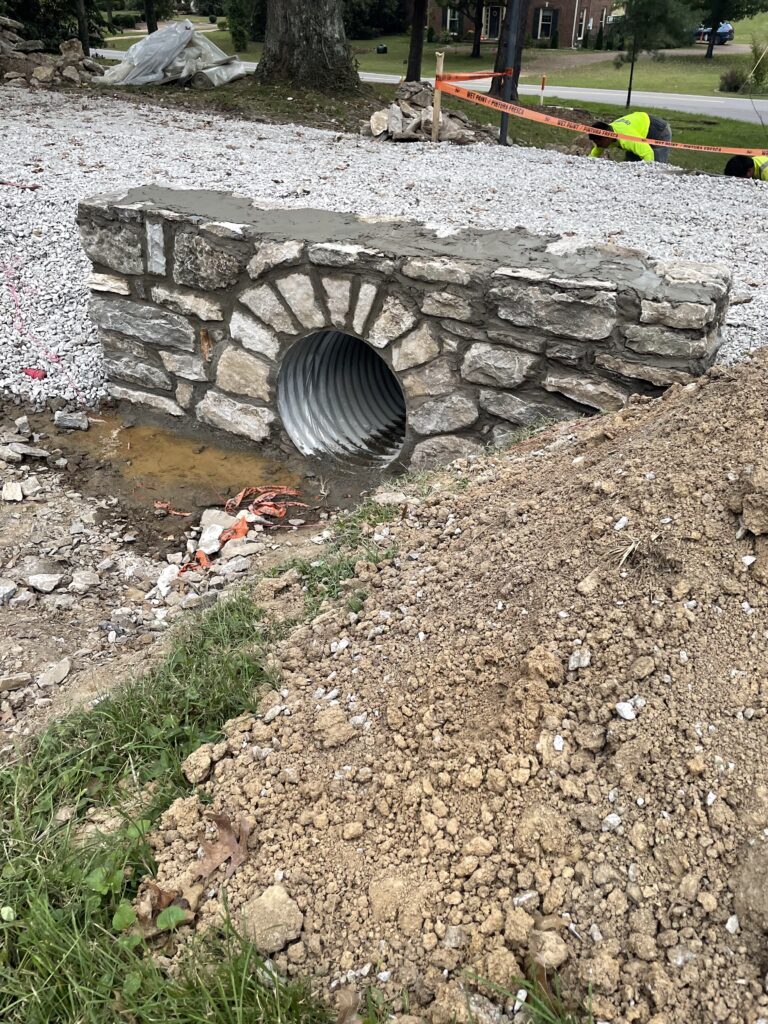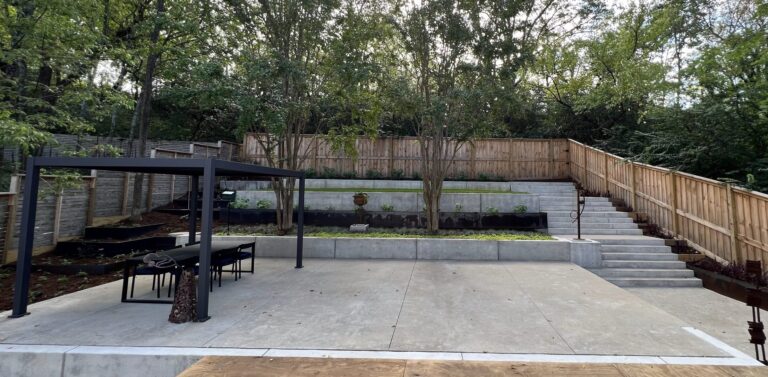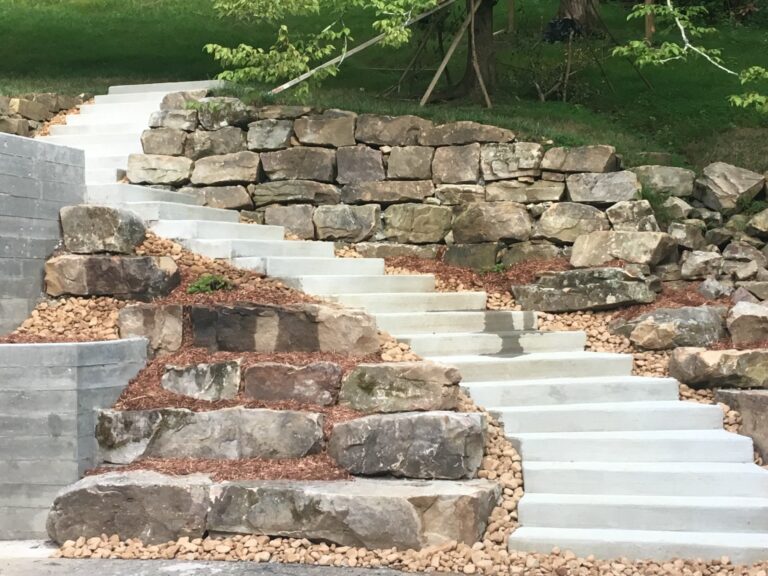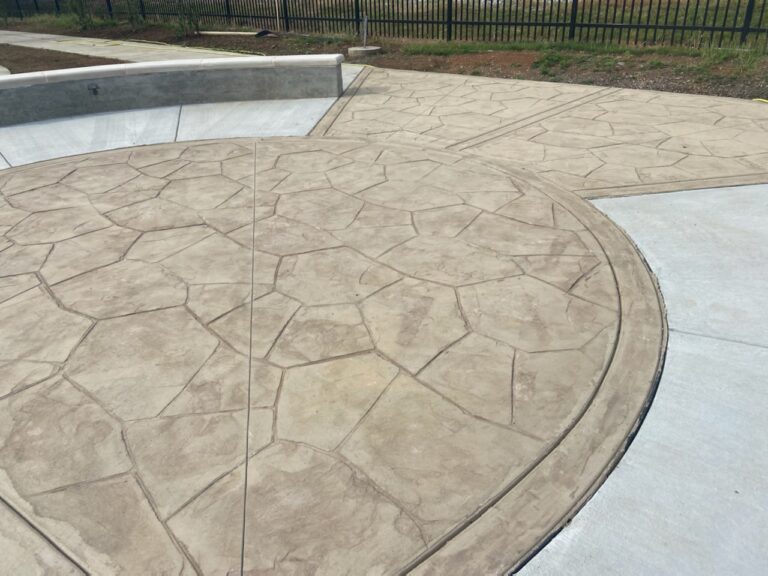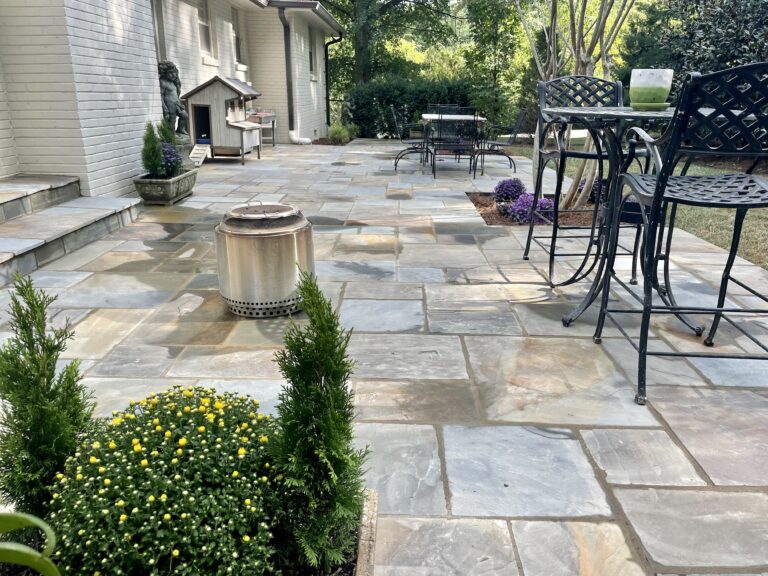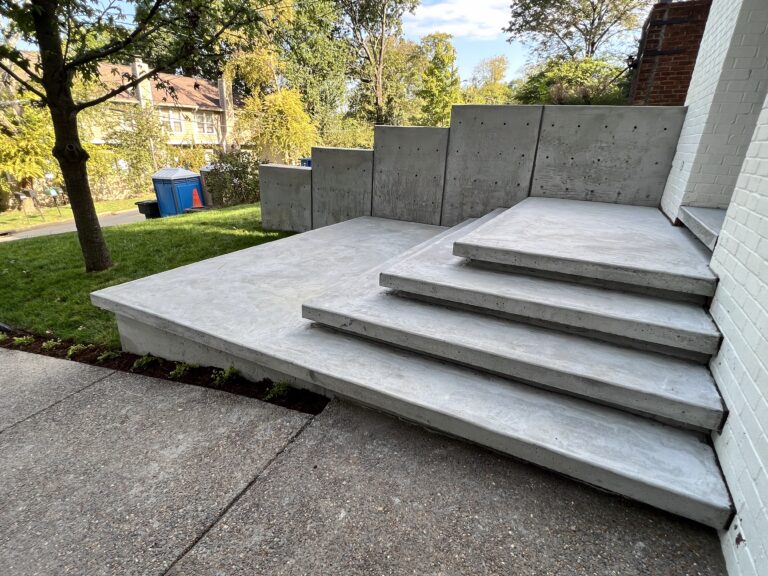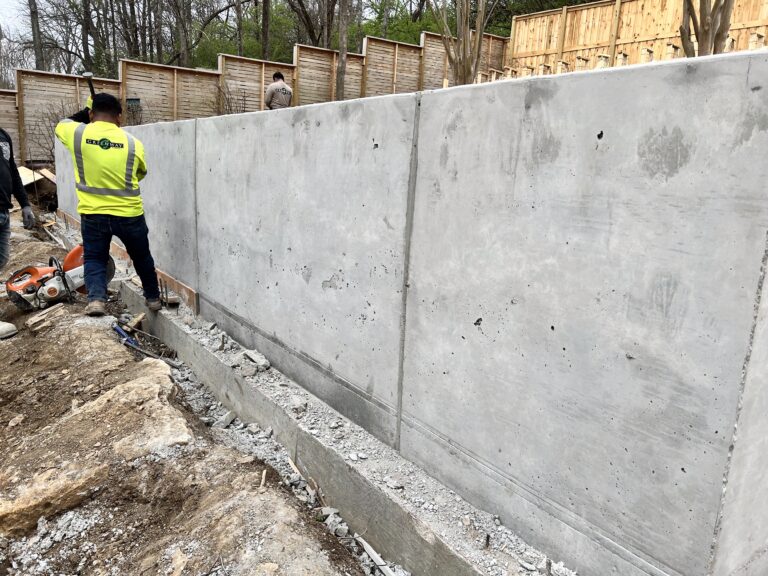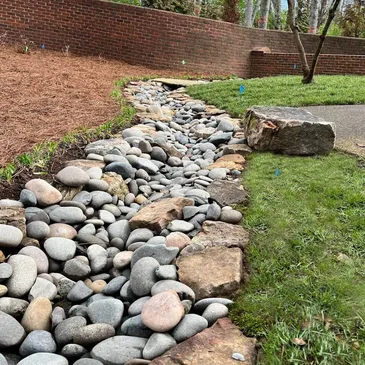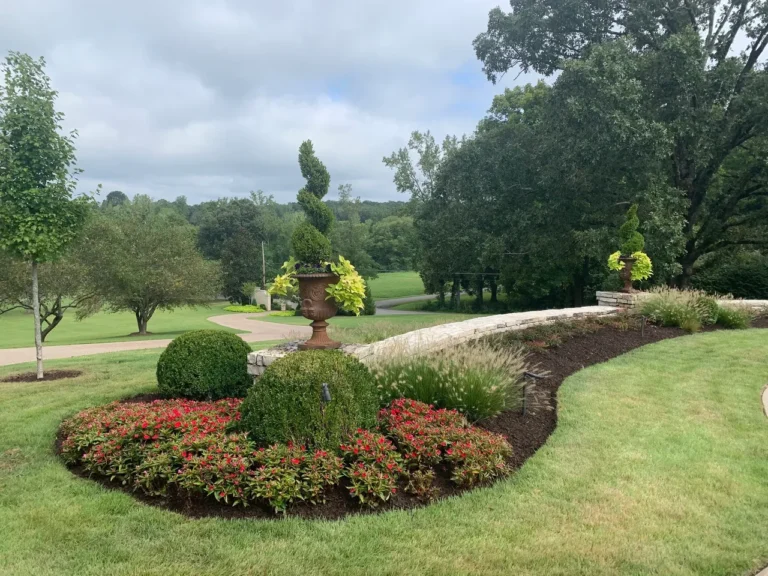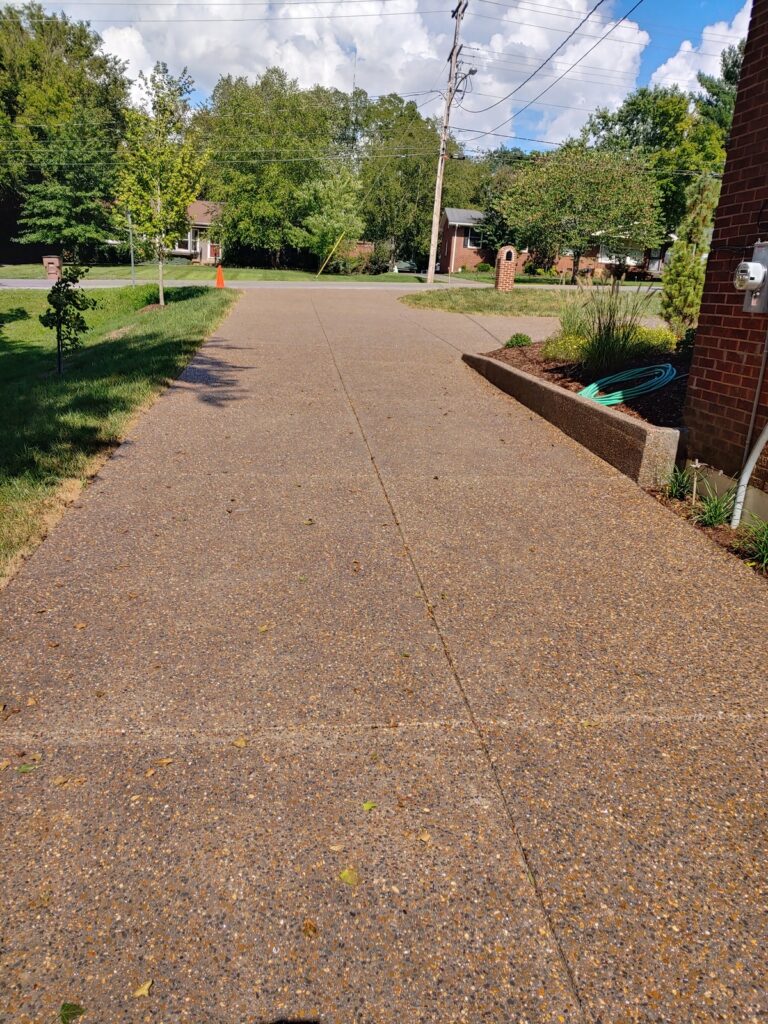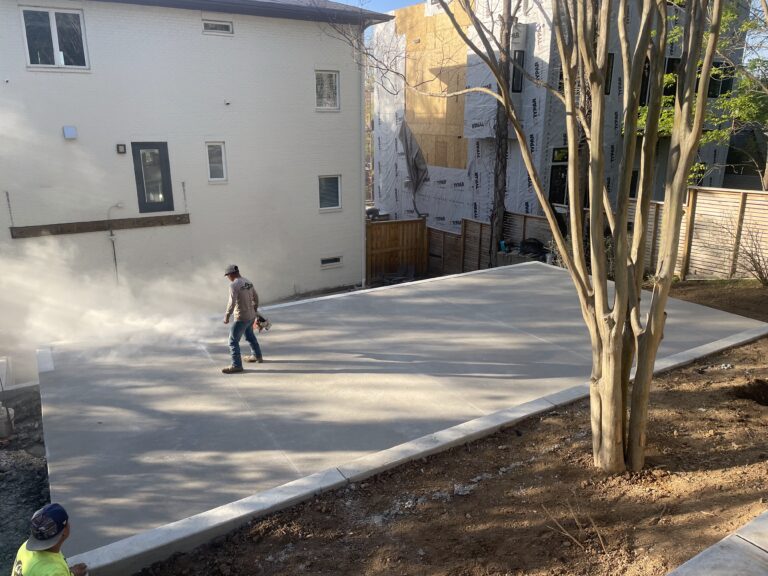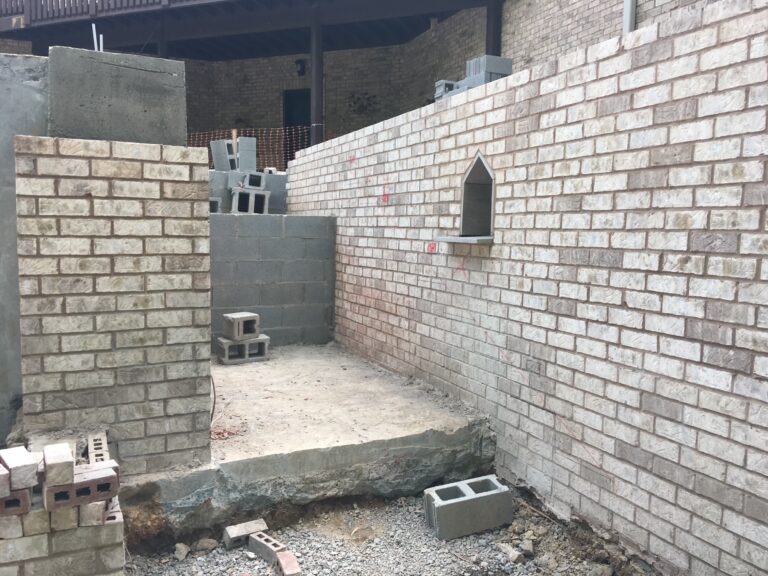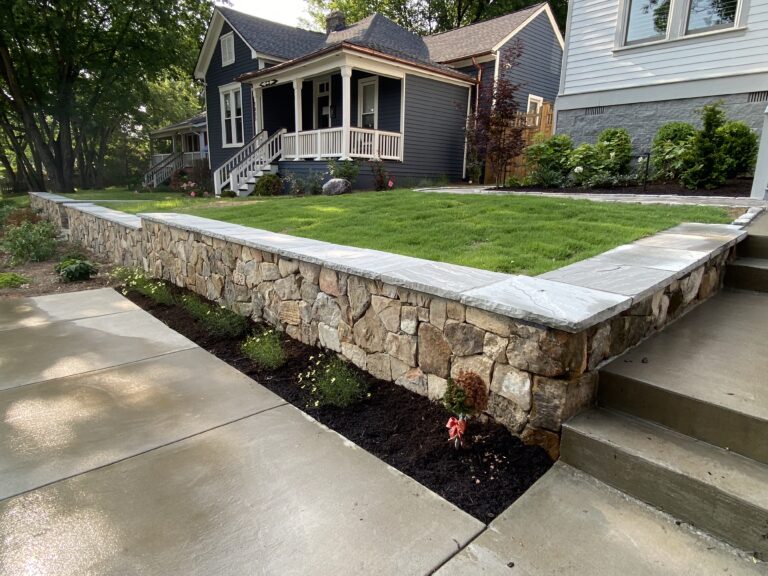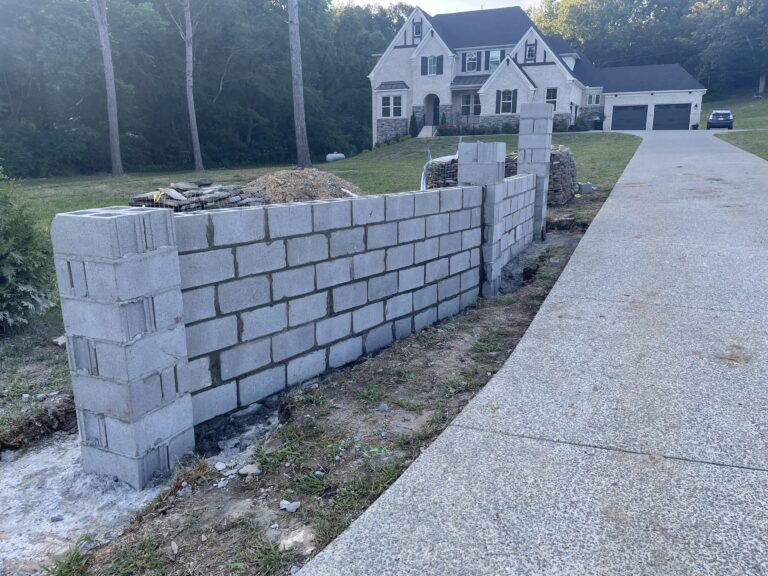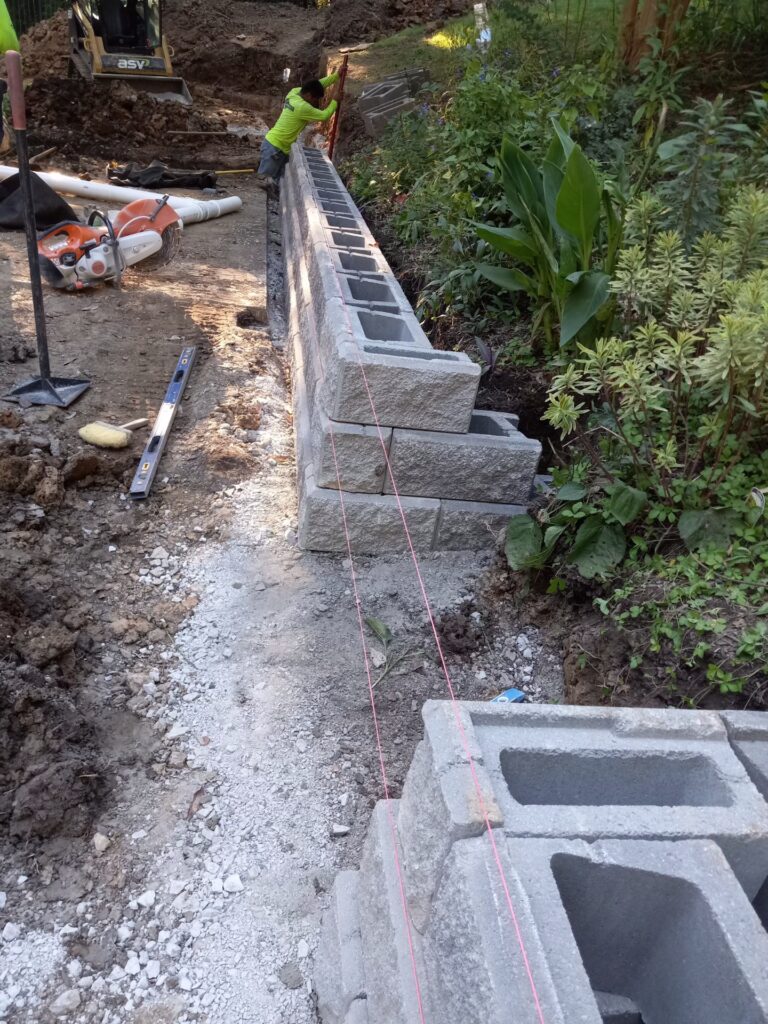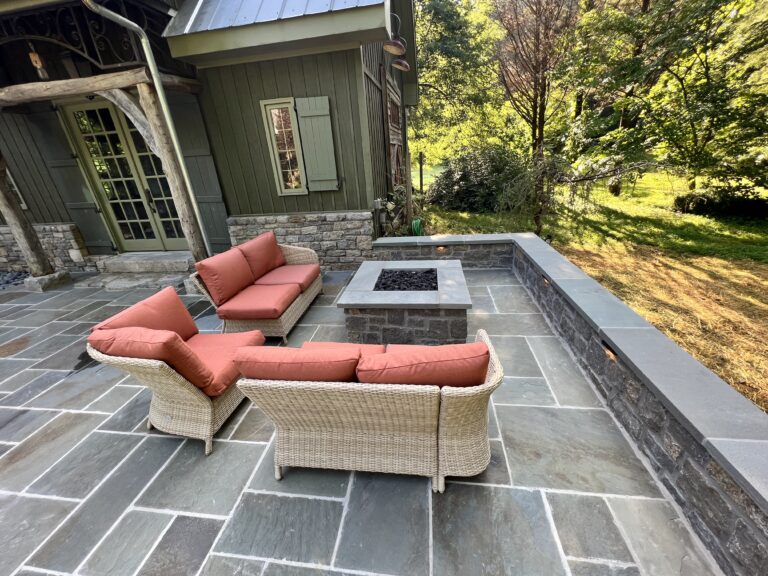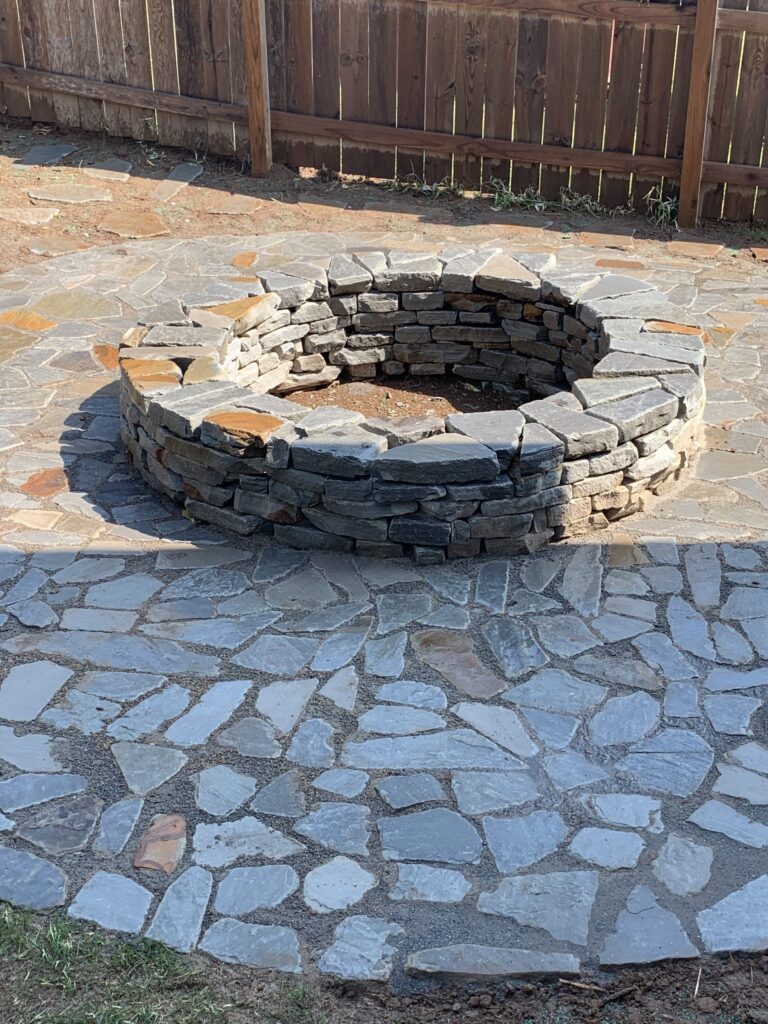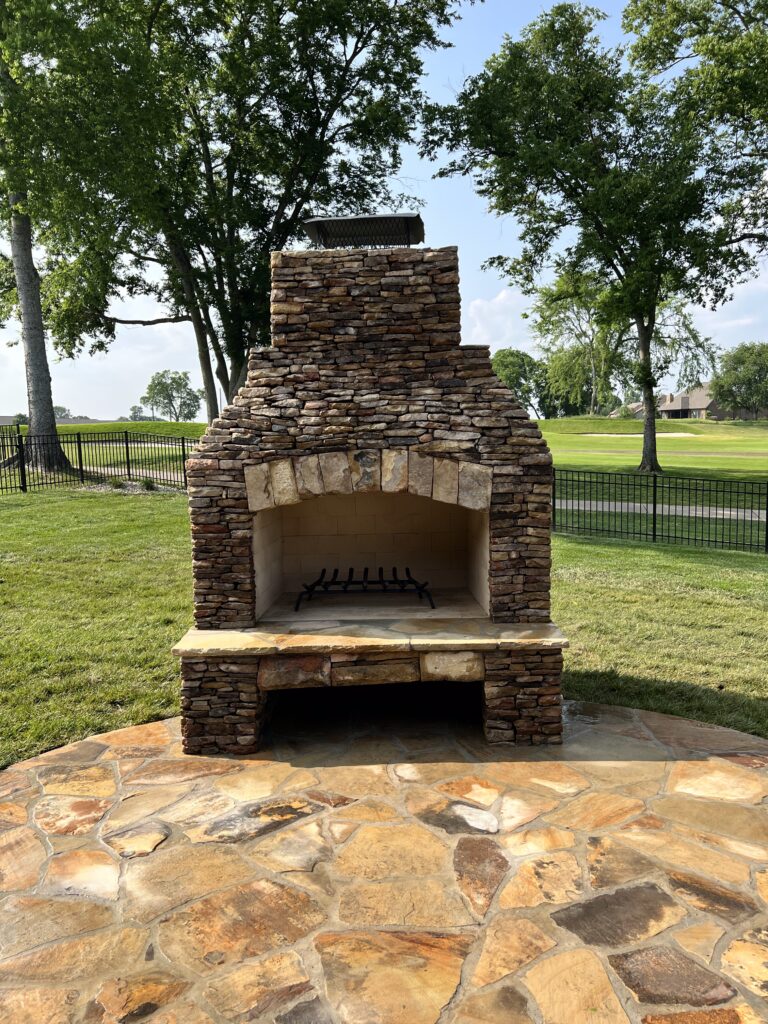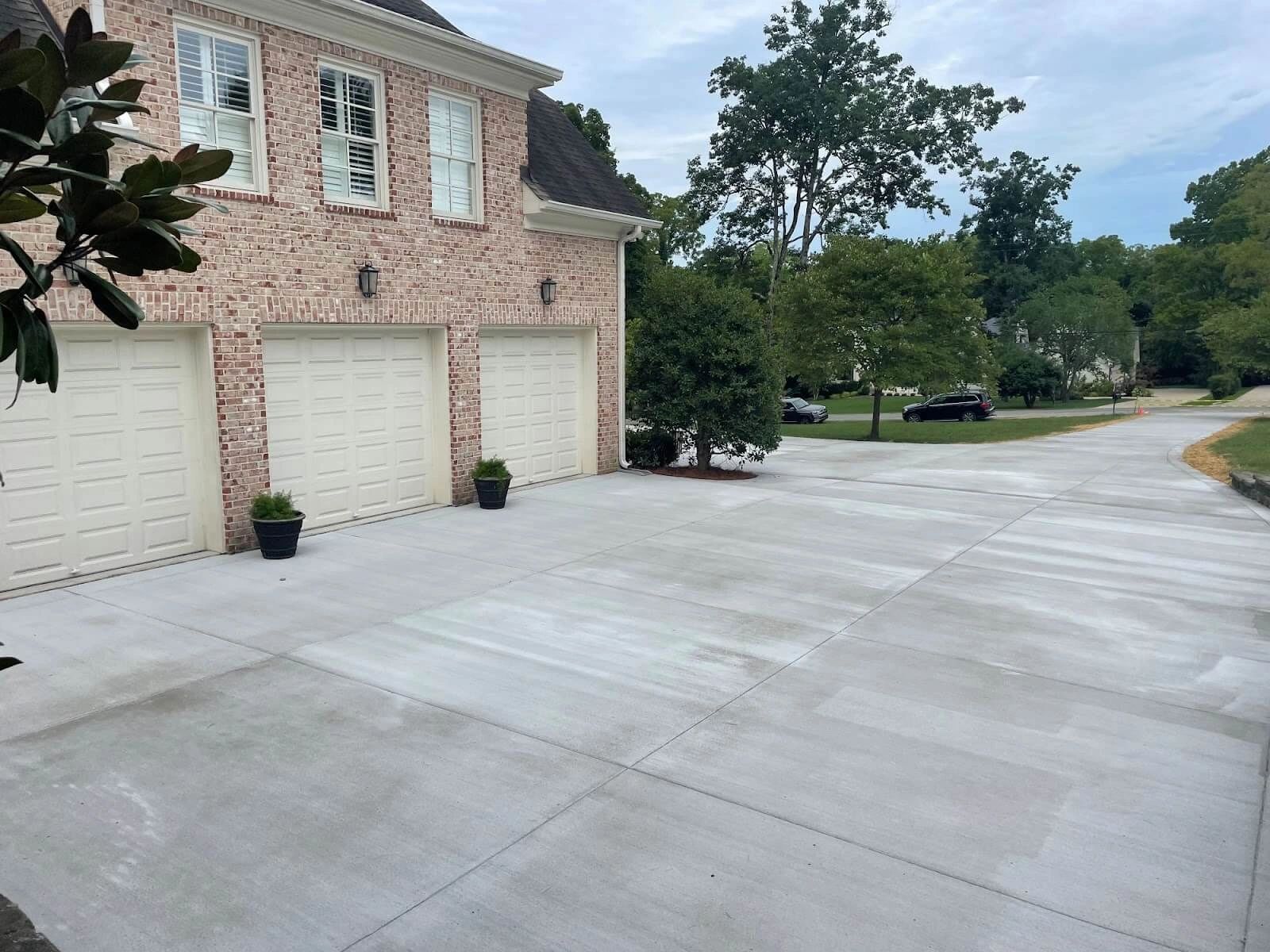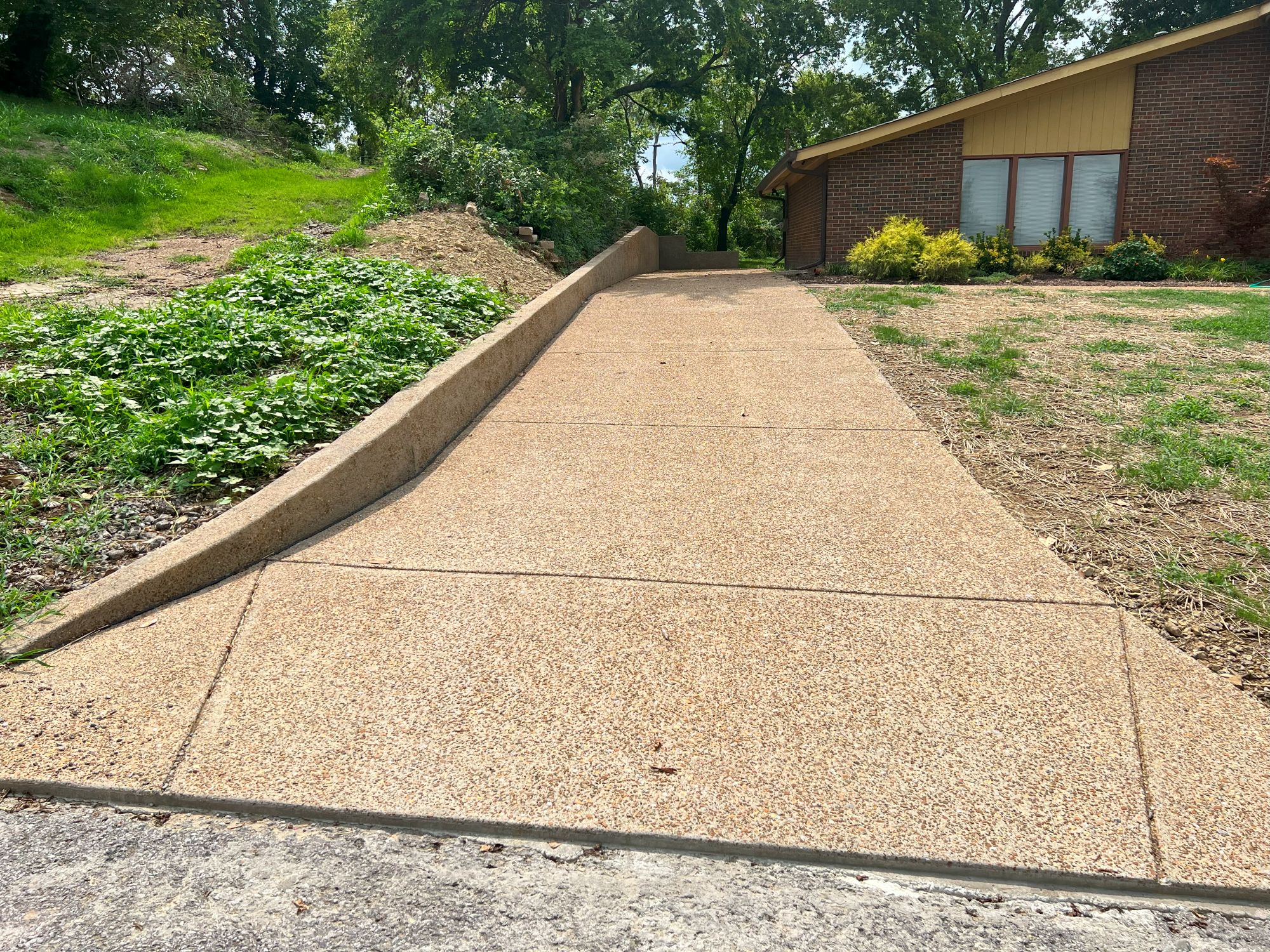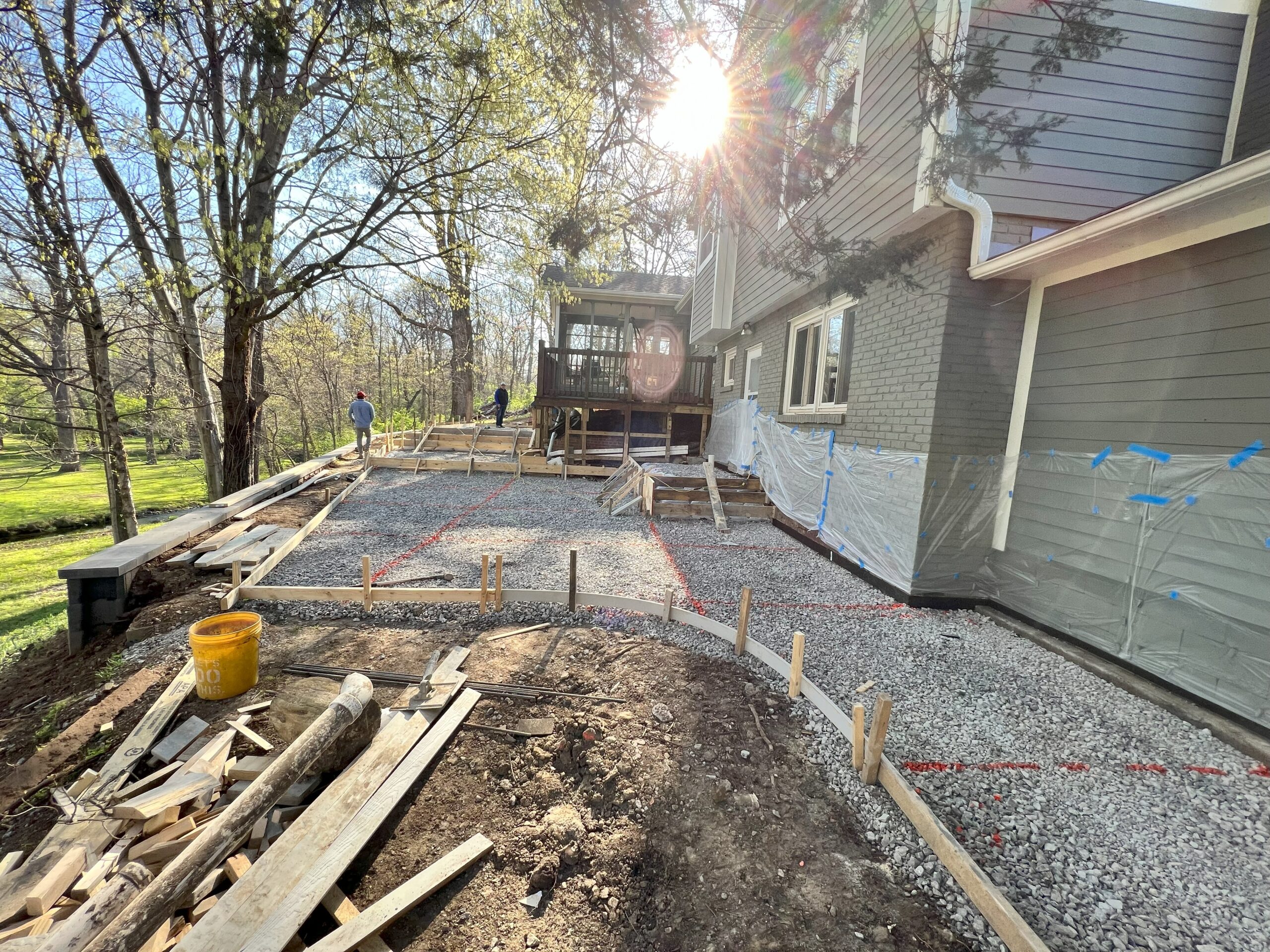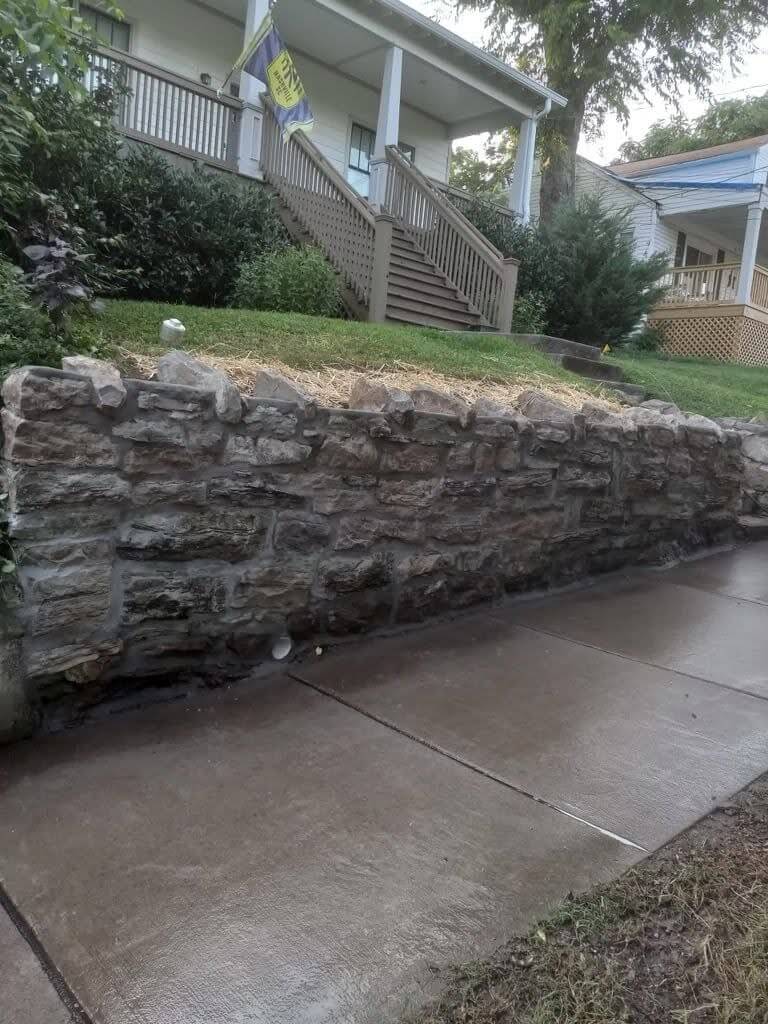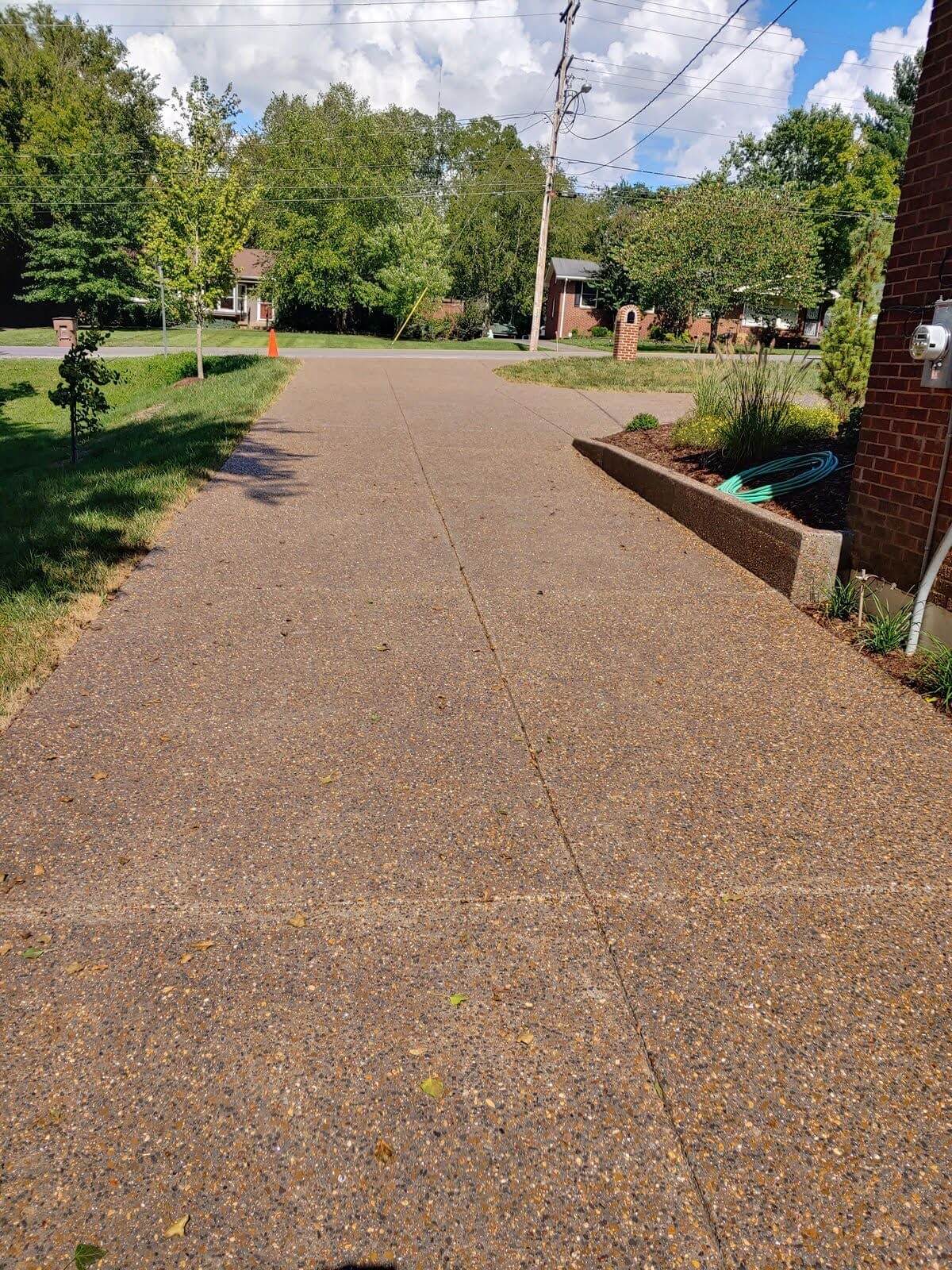As homeowners, we think often about how to maintain our residence and keep it sound. We schedule regular service, perform maintenance, and renovate to improve value. While the house itself is important, the property it sits on needs just as much attention. The ground must be stable and promote a good environment for the building to remain safe. If your land isn’t draining water properly, it can open you up to foundation issues and disrupt other structures such as patios, driveways, and sheds. Landscape drainage encompasses a number of options to improve the ability of your land to appropriately handle and divert water to prevent pooling.
What Problems Can Poor Landscaping Drainage Cause?
When heavy rainfall occurs or when accumulated snow begins to melt in the spring, the water is absorbed into the ground. At some point, the soil can only hold so much, meaning the excess water needs somewhere else to go. If good landscaping drainage isn’t in place, moisture collects above the ground in pools or puddles. The location of that buildup can lead to problems. Prolonged collection of water in spots around your lawn will lead to grass dying and create standing water that attracts pests like mosquitos. If it is pooling near the foundation of the house, it can damage the brick, cause leaks in the subspace or basement, and eventually result in shifting of the ground. When the soil is not stable, the base of your home can move just enough that it creates cracks in drywall or alignment changes in doorways. Erosion is another problem in which the water drainage leads to the movement of dirt away from its location, disrupting the contour of the land. Over time, the entire shape of an area can change dramatically and affect anything sitting upon it. By preventing the water accumulation from happening, you’re likely avoiding long-term structural damage and costly repairs.
How Do Landscape Drainage Solutions Solve the Problem?
Waterlogging can be combated by installing one or multiple forms of landscape drainage. These techniques improve the ability of the ground to drain adequately so that excess water doesn’t collect in one spot. By having these solutions in place, you can not only solve current issues but prevent future ones, as drainage problems tend to grow if not addressed. Your home’s value is also greater when landscape drainage is adequate, which is another reason it’s a good long-term investment. The installations vary in degree of cost and effectiveness, as some methods are more aggressive and time-consuming than others, and the best approach will be dependent on your specific yard. Working with professional contractors who have years of experience like those at Greenway of Nashville can help you make the right decision out of the gate so you don’t waste time, effort, or money. The cost of landscape drainage solutions is affected by the type of project and choice of materials, but it is cheaper than the long-term issues that would persist without intervening.
“Work with skilled Nashville hardscaping and outdoor construction professionals who understand your vision and respect your schedule. Contact us for a free quote!”
What Are My Options for Landscaping for Drainage?
One common approach to address yard drainage is through grading. When there is an existing hill or slope that is lowest near the home and directs rainfall in that direction, it should be corrected by reversing the incline. With the ground higher near the home and the lower point away from it, rainwater will run off so that it doesn’t end up near the building, where it would negatively impact the foundation of your house. This involves either transporting soil from one spot to another or bringing in additional dirt from an outside source and building up the low spot. The slope shouldn’t be just any angle though—ideally, the best grading is around 2%, meaning for every 100 feet of distance, there’s about a two-foot elevation change. If the change in elevation is not steep enough, water will collect on the ground, and if it’s too steep, the rainfall moves so quickly downhill that it erodes the terrain with it. A few exceptions exist, as certain areas such as patios ideally have no grade, meaning they are flat. In this case, perfect leveling will prevent puddles of water in the patio area.
Similar to grading, swale creation involves changing the contour of the ground to improve the flow of water. Whereas grading is about shifting the slope to a large area of the yard, a swale is a specific area where a gentle channel is created to direct the flow of water. With a wide surface area, it helps provide a large space for absorption as well as encourages a slow downhill roll for the water to reduce erosion.
French drains are another common method of landscaping for water drainage. Laid below the ground, this drain is often made of PVC pipe that is covered in gravel and is used to redirect the water in the ground to a more suitable area. The contractors at Greenway of Nashville have installed French drains on many properties throughout the area and can attest to how much planning goes into creating an effective French drain setup, as the prep work is almost as difficult as the physical labor.
All of the above may be paired with a retaining wall to help keep soil in place so that it doesn’t wash away. When rainwater saturates the ground, it can lead to dirt running off, and a retaining wall helps to keep it in place. Built up with materials such as brick or concrete, the retaining wall can be made into both a functional and decorative feature of your landscape. A good retaining wall must be carefully designed so that it is both stable and effective; if not, the wall may crumble or fall over because of the pressure.
While gutters aren’t installed within the ground, they do help prevent the rain from overwhelming the area around the foundation. By capturing rainfall at the edge of the roof and diverting it, the gutter prevents a waterfall effect of the rain running down the siding and settling at the base of the house. The gutters lead to a downspout that forces the captured water to a specific location on the ground and may even extend to an underground drainage system if it needs transportation to an area more distant from the house. Gutters must be regularly maintained so that debris doesn’t create a blockage that backs up flow, otherwise they can cause the exact problem they’re meant to solve!
Each of these options holds great potential in solving or preventing drainage problems, but all of them involve careful planning, skilled labor, and equipment you may not have lying around. If you’re not used to carrying out these projects like we are, you may find yourself overwhelmed—it’s easy to do with projects like these. Trust the folks at Greenway of Nashville to solve your drainage problems for you. Throughout Nashville, we have helped numerous homeowners and other property owners determine the right drainage solutions for their property, taking this burden of work off their plates. For your free quote, contact us through our website or by calling us at (615)-238-4574.
Read more content related to:
- A Swale Is Your Retaining Wall’s Best Friend
- How to Grade Land



